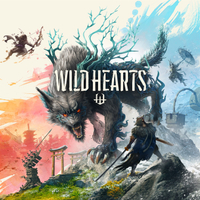Wild Hearts Xbox Review (In Progress): The first truly viable Monster Hunter competitor
Wild Hearts is brimming with enough ambition and innovation that even Capcom’s Monster Hunter series should take notice.
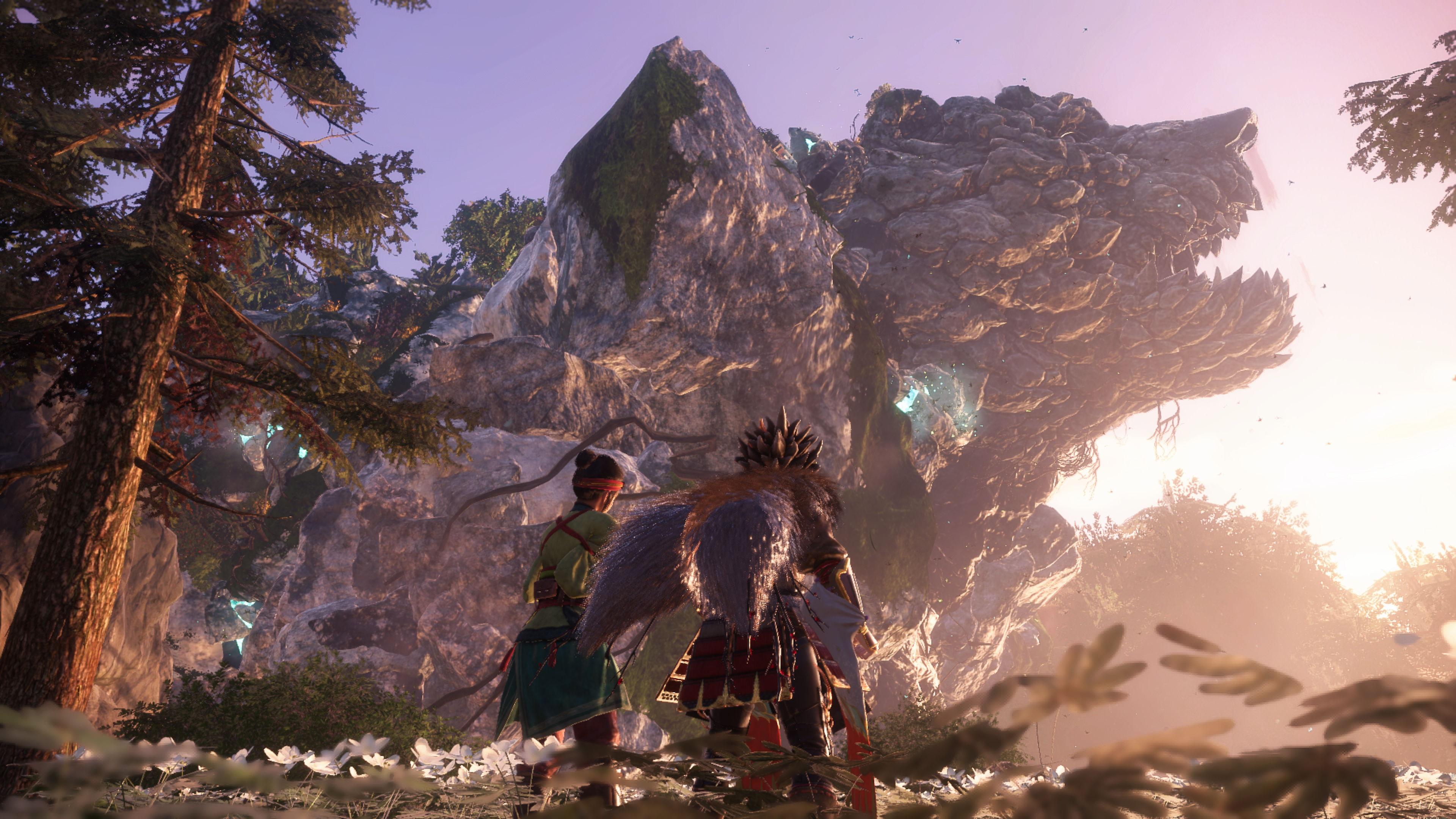
Back in October 2022, I previewed an upcoming Koei Tecmo EA collaboration, dubbed Wild Hearts. It has an intriguing Monster Hunter-like concept where players were tasked with hunting fantastical monsters called Kemono, which had the power to control the elements. Players hunt these beasties by using mysterious devices called Karakuri to aid them in battle and traverse large, open-world locales.
I enjoyed my time with the Wild Hearts preview build, so I couldn’t wait to play more. Fast forward to February 2023, I have now been given access to a near-final build of the Xbox Series X|S version of Wild Hearts, courtesy of EA and Koei Tecmo. After spending 35 hours on this game, I believe this game could be the start of a new popular franchise for Koei Tecmo and possibly be the first, true contender to Capcom’s Monster Hunter franchise.
What’s more, is that I feel like I’ve barely scratched the surface of what Wild Hearts has to offer despite sinking dozens of hours into the game so far. As with other action-hunting games like Monster Hunter, God Eater, and Toukiden, Wild Hearts contains the potential for hundreds of hours' worth of replayable content and secrets to uncover. As a result, this article will be an early impressions piece examining the first 35 hours of the game, with a full review to follow later this month. Now, without further delay, let the hunt begin.
Hunting the living embodiments of nature.

Wild Hearts takes place in Azuma, a vibrant fantasy land inspired by feudal-era Japan. This land is inhabited by humans trying to survive while living in fear of giant monsters they call Kemono. These gigantic creatures are gifted with the magical ability to literally bend nature to their will. The Kemono use their powers to transform the environment to make it more habitable for them however they destroy anything that gets in their way, whether they be other Kemono or humans.
You play as a hunter, trained to take down the Kemono and protect humanity and the world from their wrath. To accomplish this monumental task, you are given an arsenal of unique weapons and tools to track and hunt them. At the beginning of the game, you start out with five unique weapon types and unlock three more as you progress through the story: the Karakuri Katana, Bladed Wagasa, Maul, Bow, Hand Cannon, the Nodachi, Claw Blade, and the Karakuri Staff.
Every weapon has a wide variety of complex gameplay mechanics and move-sets to learn and master. While it is possible to primarily stick to one weapon, some weapon types are better suited for dealing with certain Kemono than others. Some weapons are slow and heavy hitting but can break through thick hides using powerful super moves, while others let you move fast to dodge and parry the more agile Kemono. Blunt, bladed, and piercing weapon types also interact with different monsters at varying efficacy, and the game's "Cyclopedia" offers research information on how to approach each battle strategically.
Each of the eight weapon types has been fun to mess around and hunt with, but my favorites so far are the Hand Cannon and the Claw Blades. The Hand Cannon is a massive cannon that can fire almost a limitless supply of explosives and a devastating laser beam. In contrast, the Claw Blades is a blade with a chain grappling hook attached to it. When you hook the claw onto a Kemono, it will let you fly through the air like a kite, so you can rip enemies to shreds with aerial attacks.
Get the Windows Central Newsletter
All the latest news, reviews, and guides for Windows and Xbox diehards.
The variety on offer is incredibly impressive, with each weapon offering a completely unique playstyle, complete with crafting trees to further customize and enhance your combat prowess. However, there's another major combat utility mechanic you absolutely must be aware of: Karakuri.
Master the mysterious Karakuri
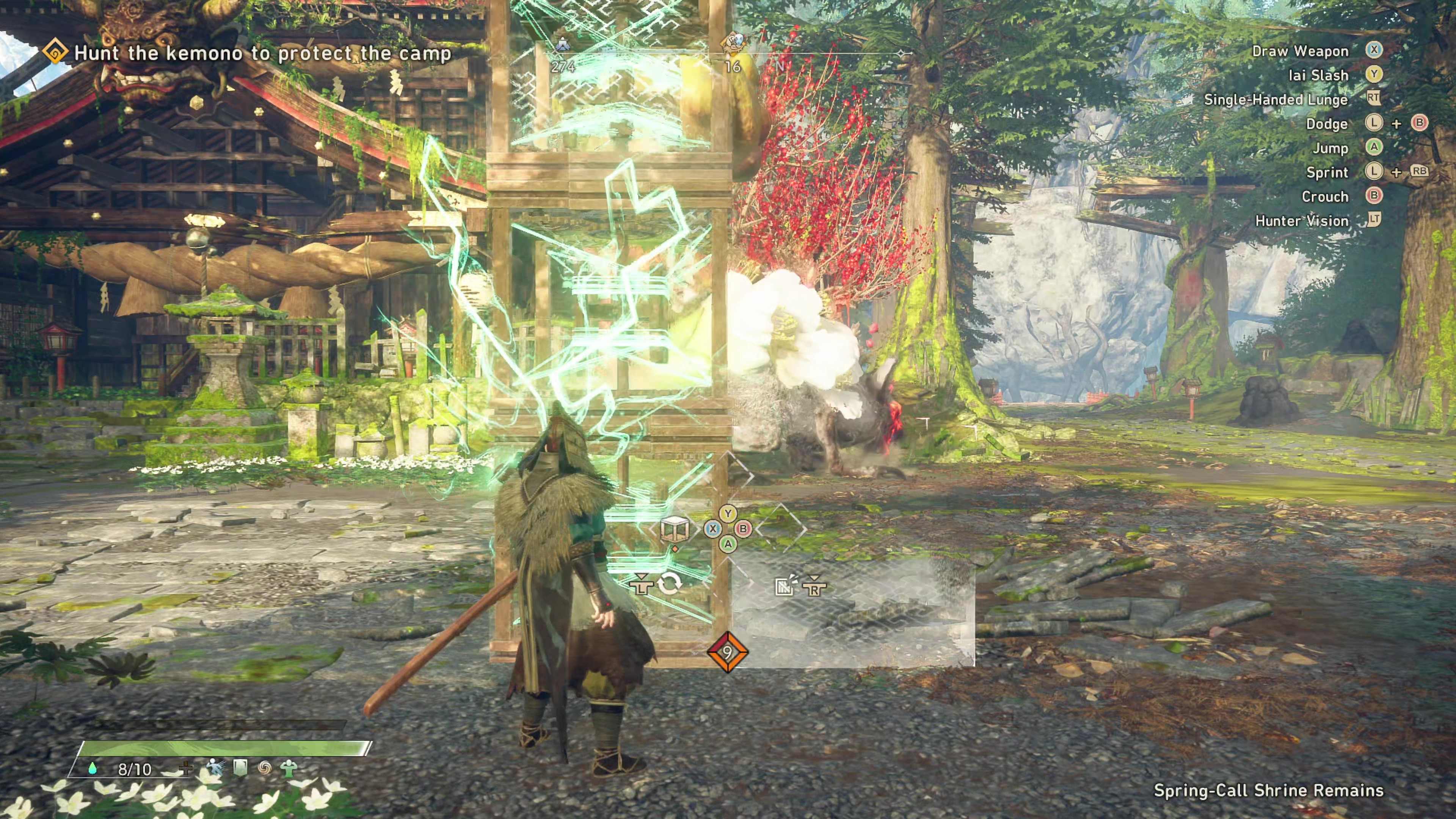
Wild Hearts' polished melee combat ascends to new heights once you use them in conjunction with Wild Hearts’ unique Karakuri construction mechanics — oftentimes literally. The Karakuri is an ancient and mystical form of engineering that lets you conjure up structures, devices, or even buildings out of thin air. These include Basic Karakuri structures like crates that act as shields to block incoming attacks, springboards to help you evade attacks or close the distance, torches that enable your weapon to deal fire-elemental damage, and much more.
You can also combine Basic Karakuri structures together to create heavy-duty structures called Fusion Karakuri designed for tackling larger Kemono. You can build things like barricades to repel charging monsters, ballistae to shoot airborne Kemono out of the sky, and traps to immobilize enemies. The game ramps up the further in you get, giving you designs for comically huge mallets to smash a monster’s face, gigantic rocket-spewing turrets, and ever more crazy devices that I have yet to unlock.
What’s more, is that you can weave Karakuri-building in the middle of weapon attack combos. For example, say you’re using a slower weapon like the Maul, you’ve just finished doing a big attack and the monster is about to punish you while you’re recovering. You can cancel the recovery animation more quickly by building a jump pad or, spawn a barricade to protect yourself and continue the assault.
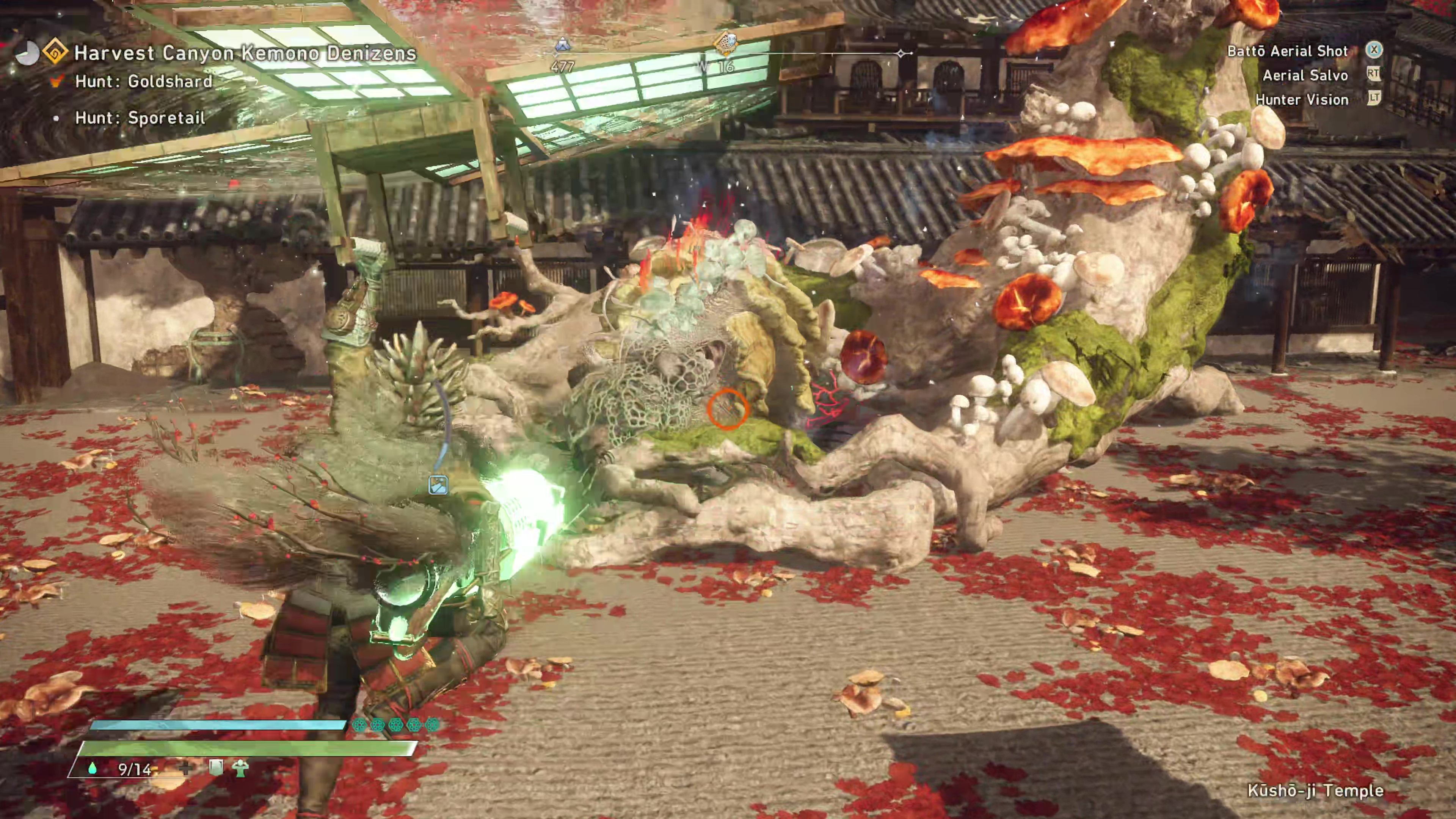
You can't just conjure indefinitely, though. Basic and Fusion Karakuri require a resource called the Celestial Thread which can be acquired from mining rocks and cutting down trees within the locale. Celestial Thread can also be obtained using a technique called Hunter’s Arm on a Kemono. You can perform this technique by jumping and grabbing a monster, climbing onto a glowing spot exposed through attacks, and using Hunter’s Arm to suck out the Celestial Thread from the beast. Not only will you restore your Celestial Thread supply, but you will also gain a buff that lets you build Karakuri structures without consuming resources for a short time. These gameplay mechanics create a lot of variety in motion while dealing with larger enemies, and figuring out the way they interact and intersect is incredibly rewarding.
You can perform special attacks by interacting with Basic Karakuri using your chosen weapon. For example, jumping off crates lets you perform aerial attacks or running into springboards lets you do a dash attack. This is quite literally the tip of the iceberg as there are loads of secret weapon/Karakuri combo attacks you can perform throughout the game as you unlock more Karakuri to build.
I can imagine half of the fun of Wild Hearts will be spending hours theory-crafting and researching ways in which weapons/Karakuri combination synergizes are the best to pull off the coolest moves possible.
Exploring the mysterious and ravaged world of Azuma

There are multiple maps to hunt Kemono in Wild Hearts, and each one is a gigantic biome filled with varying climates and remnants of human civilization destroyed by the Kemono. To help you survive hunting in these lands, you can special Karakuri out of combat called Dragon Karakuri to traverse the precarious landscape.
By unblocking mysterious pools dotted throughout each map called Dragon Pits, you gain resources to build Dragon Karakuri. Some of the Dragon Karakuri you can create include base camps which you can fast-travel to on the map, campfires to set up online multiplayer lobbies, cooking facilities to enhance the beneficial effects of food ingredients you find in the field, a forge to change your equipment and watchtowers to detect Kemono in the vicinity.
You can also create Dragon Karakuri to travel faster like zip lines that can carry you to the top of mountains, wind turbines that let you fly up walls too high to climb normally, a vehicle to speed across the map, and more. One of my favorite tricks is to combine the glider Karakuri with an air lift pad, to soar up cliffs and scale gorges more rapidly.
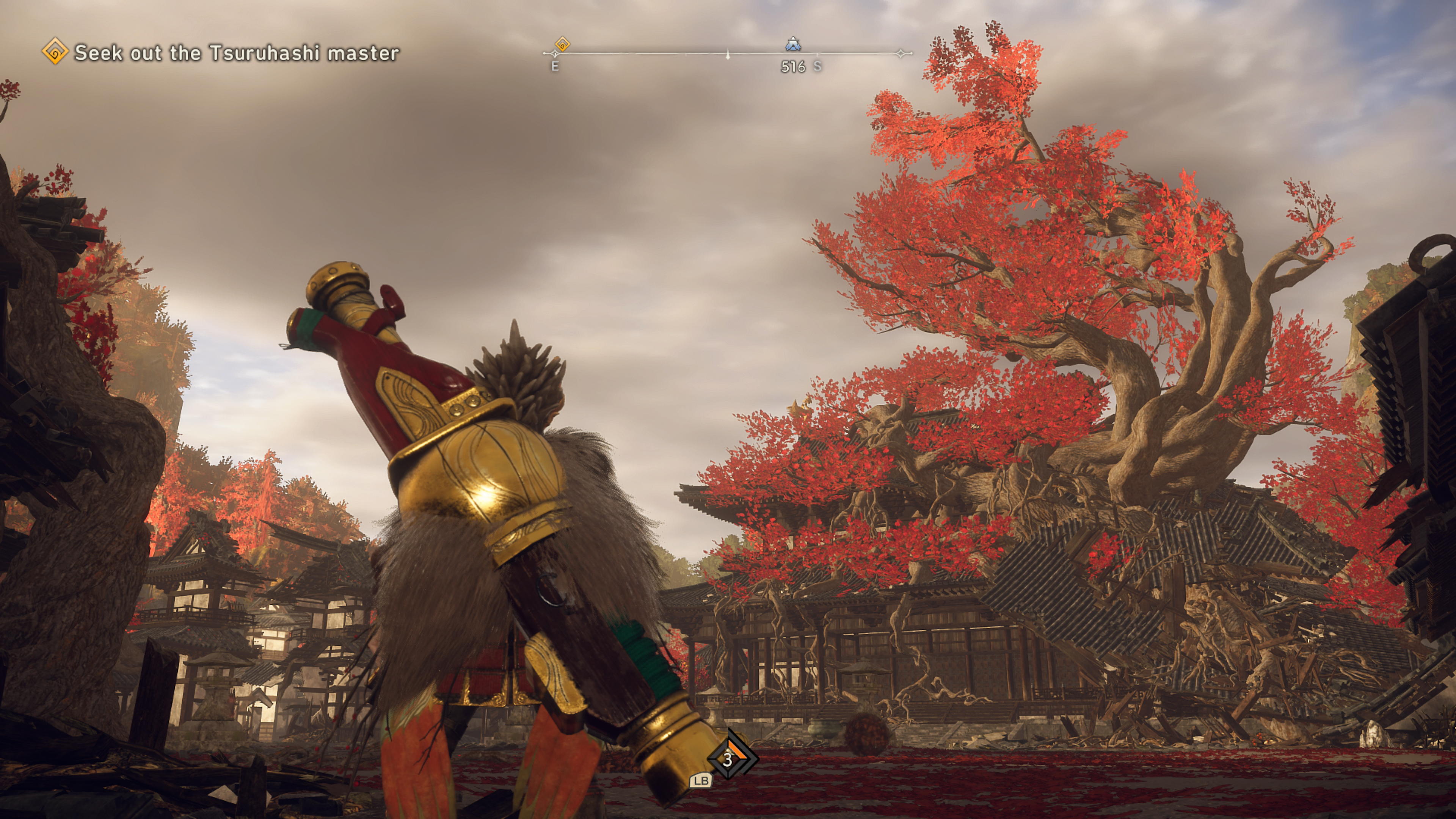
Utilizing and experimenting with all the Karakuri at your disposal is crucial in tracking down Kemono efficiently and discovering the hidden secrets of Azuma. For instance, you can find little robots in every locale called Tsukumo. These robotic buddies act as allies for you while playing solo and can increase the max amount of Celestial Thread you can carry by upgrading them using bolts obtained when you find them.
The game's world also contains log entries that reveal more about the lands and its (former) inhabitants. Azuma is a land of ruins, where nature has quite literally risen up to reclaim it from man. The struggle between nature and human ingenuity is a recurring theme in the game, punctuating every aspect of the game's story and design. The last bastion of human civilization is the port of Minato.
Return home to craft gear for hunting bigger game
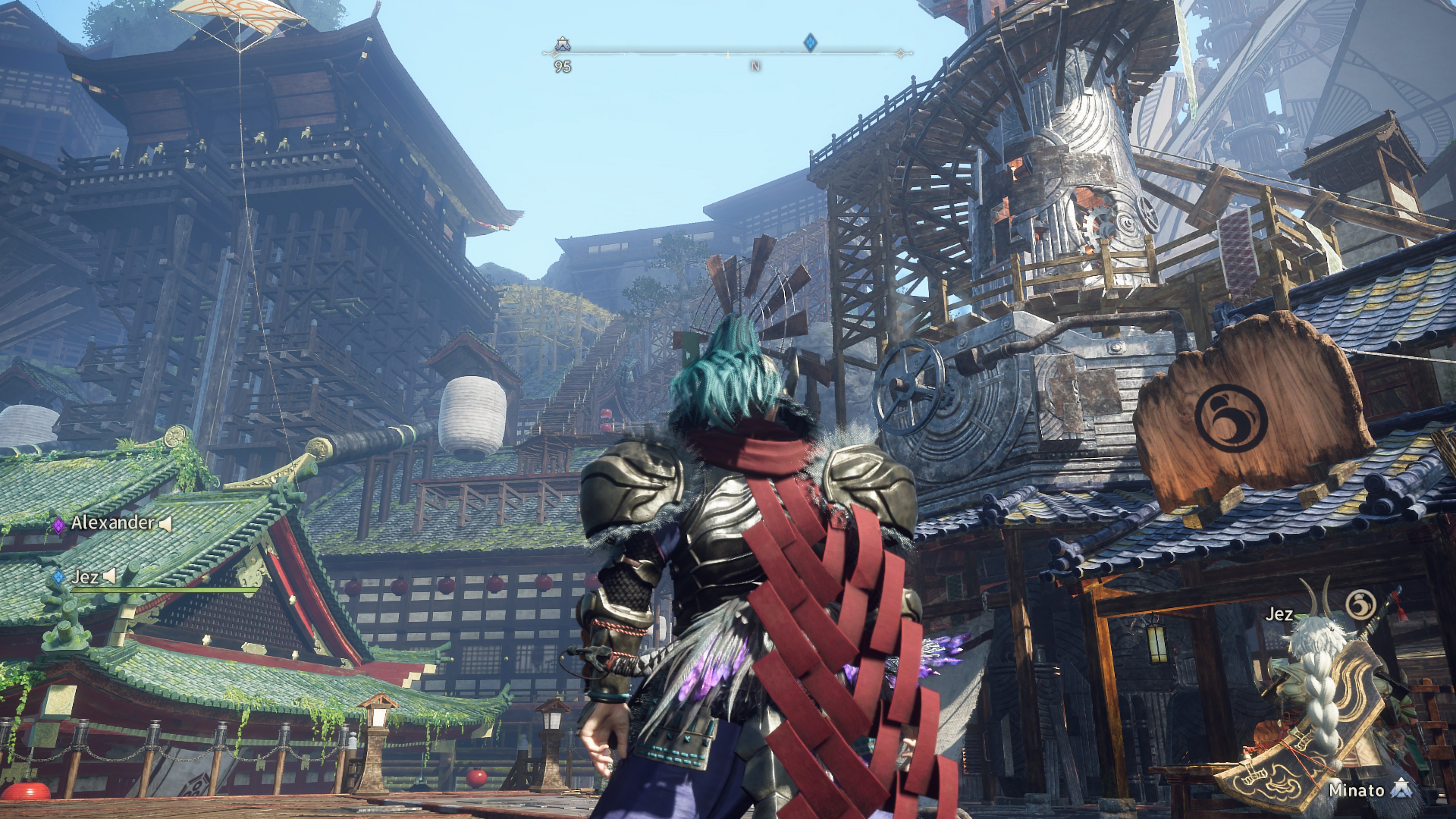
When you progress past the opening hunting missions, you gain access to the game’s hub town — Minato. Here, you can converse with the townsfolk to learn more about their world, take up side-quests that offer lucrative rewards and also forge new weapons and armor made from the materials of the Kemono you hunt.
When forging new gear, you don’t just simply make a weapon and upgrade it along a linear weapon tree. It is more akin to a talent tree featuring multiple paths you can take your chosen weapon down. With each upgrade, you can give weapons passive traits that increase their damage output, offer defensive skills, or even change how their gameplay mechanics work. Even better is that you can pick and choose which passive traits to keep as you upgrade a weapon, so you can have that weapon’s design fit your playstyle as you progress.
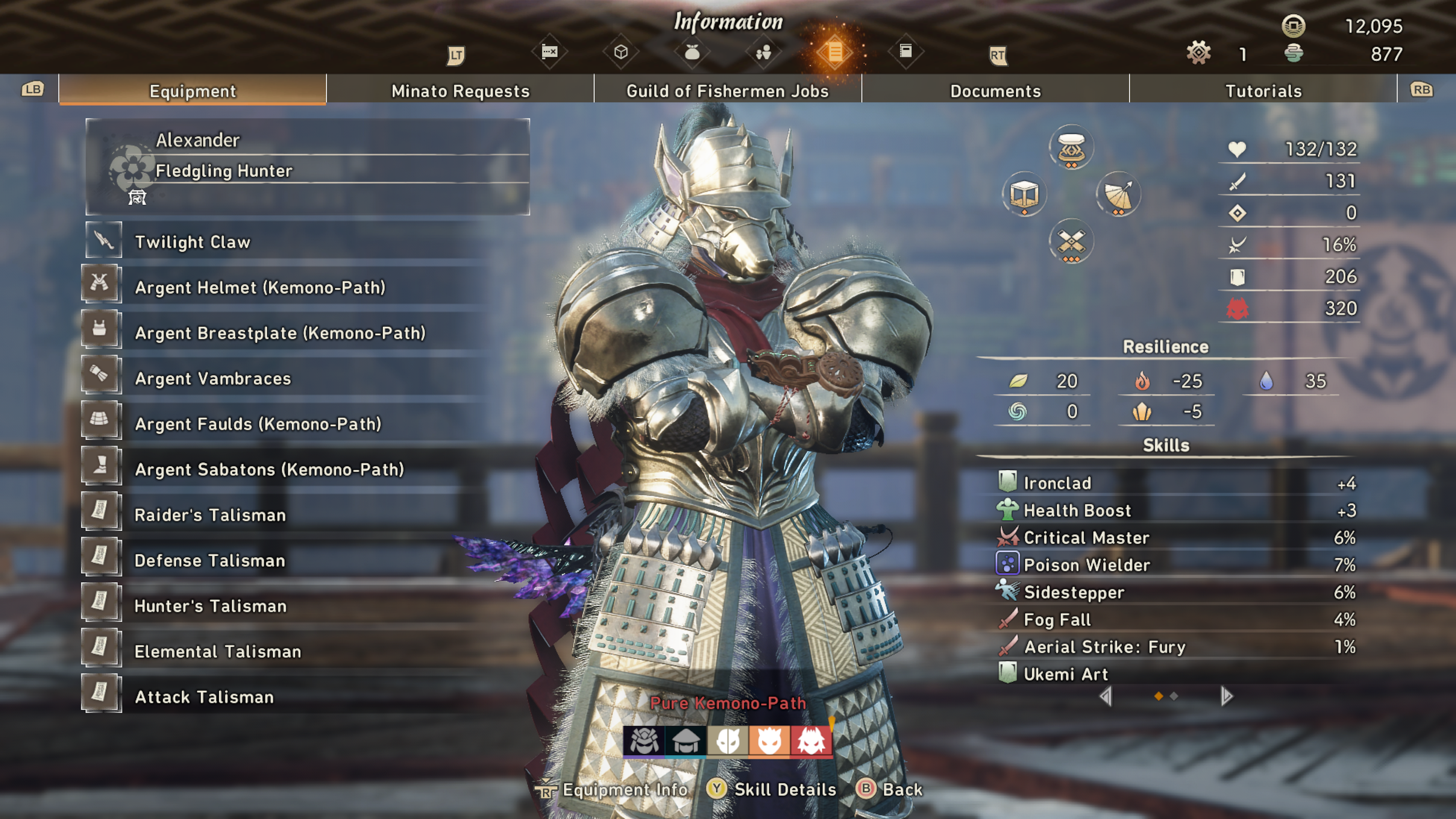
Forging armor, on the other hand, isn’t as complex as forging weapons from what I’ve seen so far but it has its own intricacies to bear in mind. When creating new armor, you use Kemono parts to forge a regular piece, then you can modify it using specific materials to create a ‘Human’ or ‘Kemono’ variant of the armor. This adds a depth of complexity and careful consideration is needed when creating builds as certain passive armor skills can only be activated when you have enough ‘Human’ or ‘Kemono’ modified armor pieces.
Much like the Karakuri system, Wild Hearts gear crafting system is very free-flowing and in-depth. I have spent hours in the forge alone and it felt so rewarding fashioning myself gear that granted me the ability to poison monsters or brief windows of invincibility when dodging a Kemono's attacks, ensuring my survival.
Hunting Kemono with friends
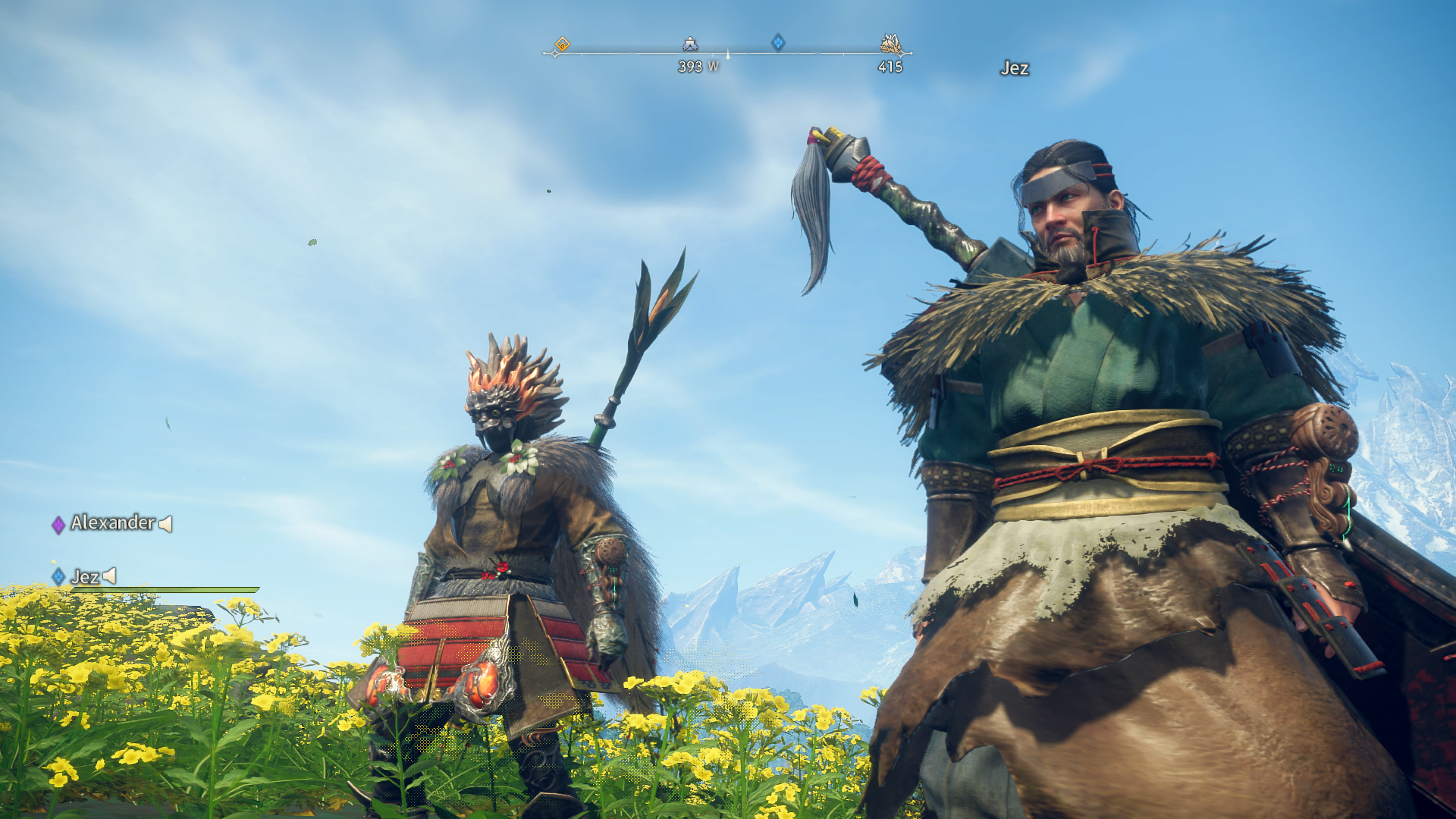
By far the best feature of Wild Hearts I have seen thus far, and one that gives even Monster Hunter a run for its money is the multiplayer system. During my playthrough, I was able to hunt with random players and my colleagues to test the online servers and it has been running flawlessly so far.
Although it's limited to three players instead of the typical four, the requirements to join an online session are more intuitive than the obtuse systems found in certain similar games. The best part is that every player can progress together in the main story, so nobody gets left behind. It's as simple as creating a session and inviting a friend. The host dictates the progression of the story, or you can set up simple hunts for specific targets.
It's great news that it all works so well, as multiplayer is when Wild Hearts is at its best. Having multiple players lay down Karakuri devices all over the ground, flying around and slicing and dicing monsters is a glorious spectacle to behold. Plus, you can help your teammates’ by laying Dragon Karakuri so they can get around the map easier, and they will stay in the host player’s ‘world’, even after they go offline.
Though granted these are early days yet as during my playthrough, only a handful of people had access to the multiplayer. Time will tell if the multiplayer servers will be able to handle thousands of players simultaneously once Wild Hearts is fully released to the public.
Relearning how to hunt in a new world
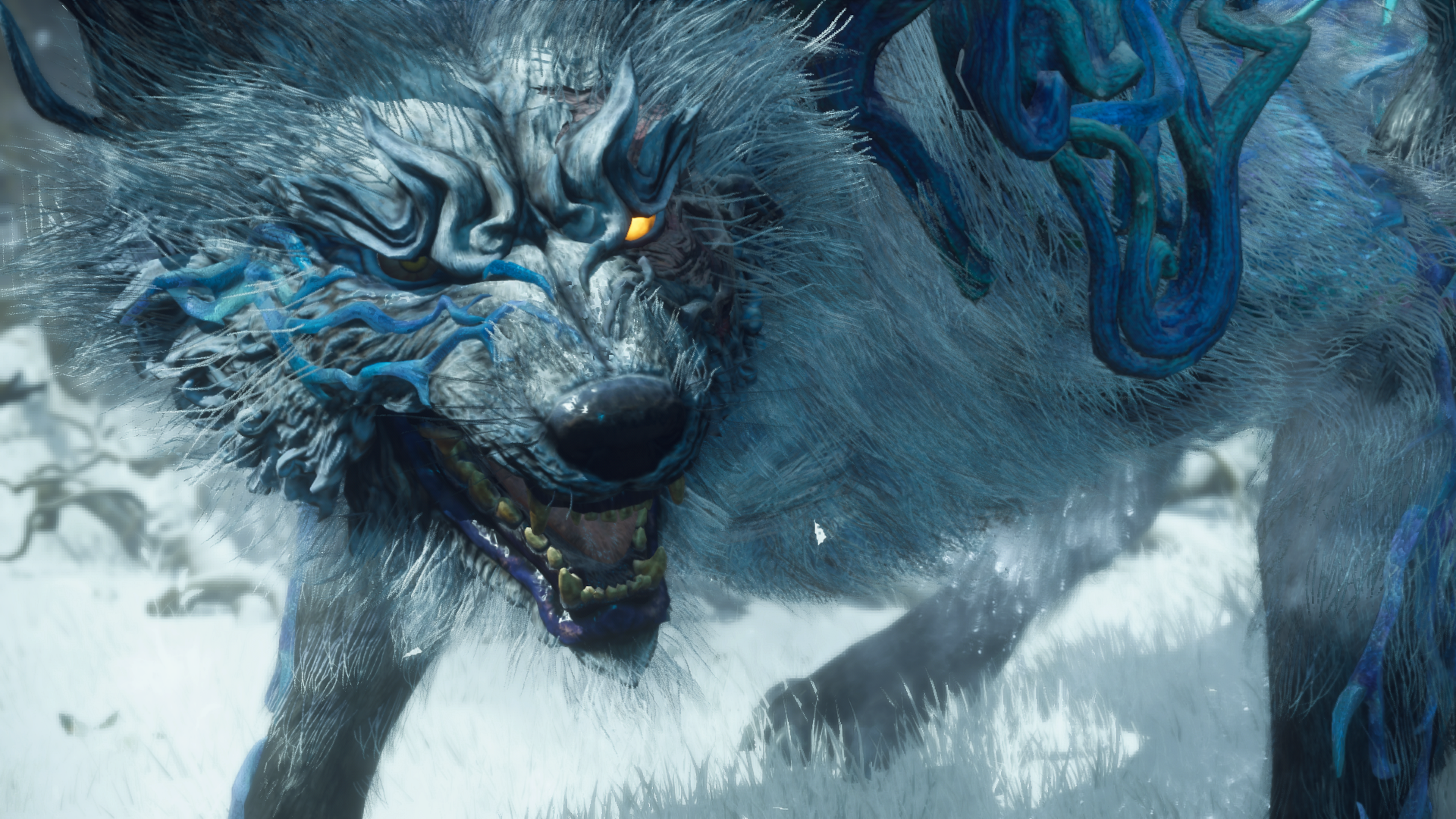
I have a confession to make; after clearing the opening act of the game and exploring the later locales beyond the early build back in October 2022, I went in with a bad mindset. As a fan of the Monster Hunter series since Monster Hunter World, I wrongly assumed that Wild Hearts was going to be very similar to those games. I figured I could just rush through the early game with a couple of weapons without too much use of the Karakuri.
Unfortunately, I had a harsh reality check as nearly every creature I came across has been very challenging to deal with. They hit hard, have giant area-of-effect attacks, and can warp the environment and use it as a weapon against you. What didn't help was that the weapons and knowing when to dodge enemy attacks feel so different from what I’m used to in Monster Hunter.
To get over this mental roadblock I made for myself, I had to get Monster Hunter out of my head and start treating Wild Hearts as its own entity and relearn everything. Once I got into the habit of using Karakuri frequently in battle, spending time preparing for fights, and branching out into using different weapons and armor for specific monsters, Wild Hearts was starting to click with me. Monsters which originally gave me a world of trouble suddenly became easier to deal with as I grew more proficient with the combat system, I found myself going into combat more confidently, and having loads of fun in the process.
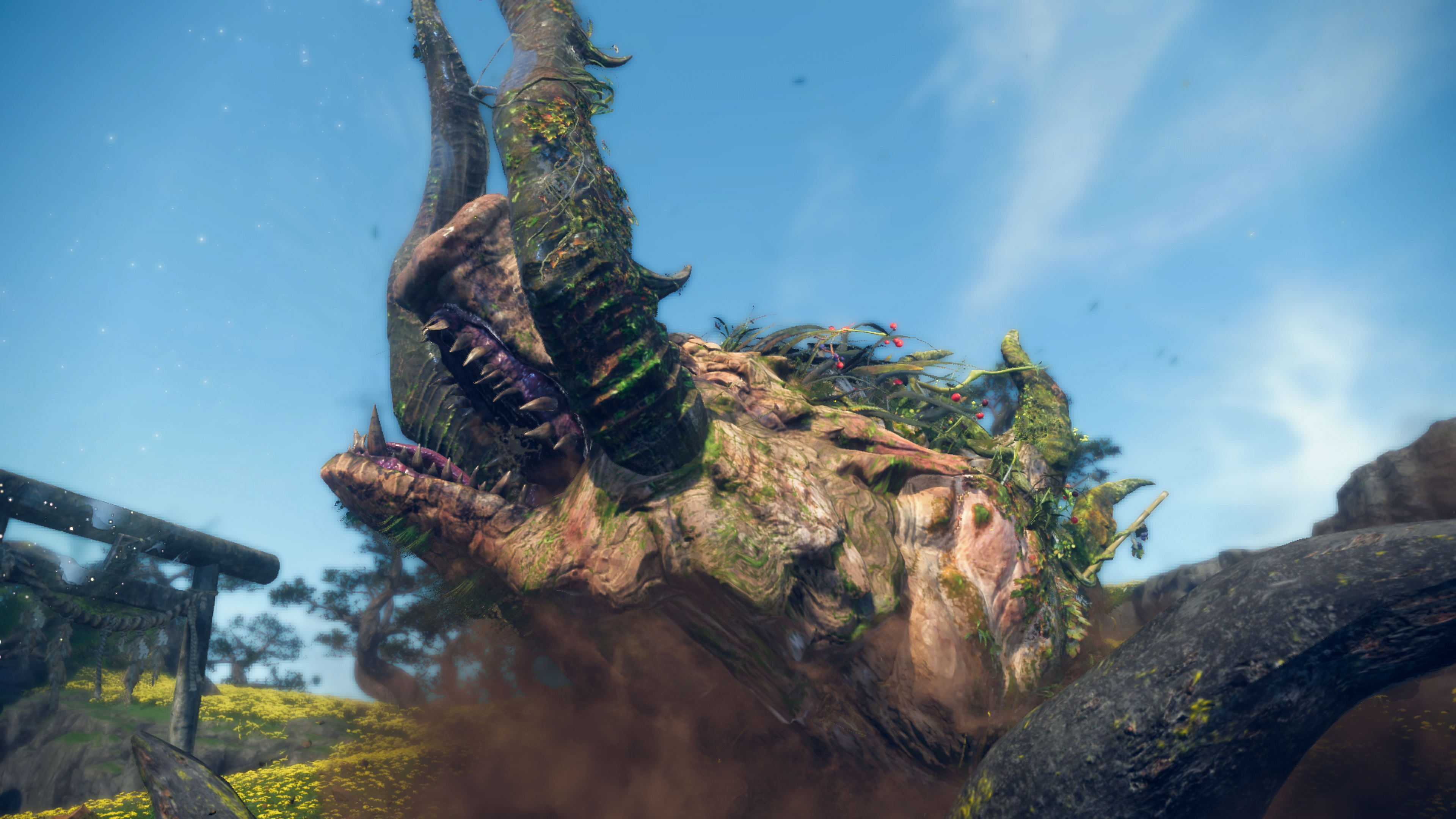
My only worry so far is that the performance of Wild Hearts tends to drop below 60 FPS when there are too many visual effects happening, too many characters on-screen, or fighting in certain areas of a hunting ground like rivers or lakes. I'm playing this game on the Xbox Series X and this happens even when playing in Performance Mode. This is very concerning as these framerate drops can cause my controller inputs to lag or even not register, leading to unintentional frustration as I struggled in vain to control my character properly during hunts.
The game's Karakuri system, placing objects in the game's world, may be partially to blame for frame rate issues. Certain areas in the game's maps are very densely designed and look great, but three players on-screen can cause the game to slow down. This can be frustrating since some weapons have very specific timing windows that can be thrown off during slowdown.
However, I have been informed that Wild Hearts will receive a day one patch containing several bug fixes for PC and console, so here’s hoping that the framerate will improve when the game fully releases on Feb 17, 2023.
Wild Hearts is looking to be a very exciting hunting adventure
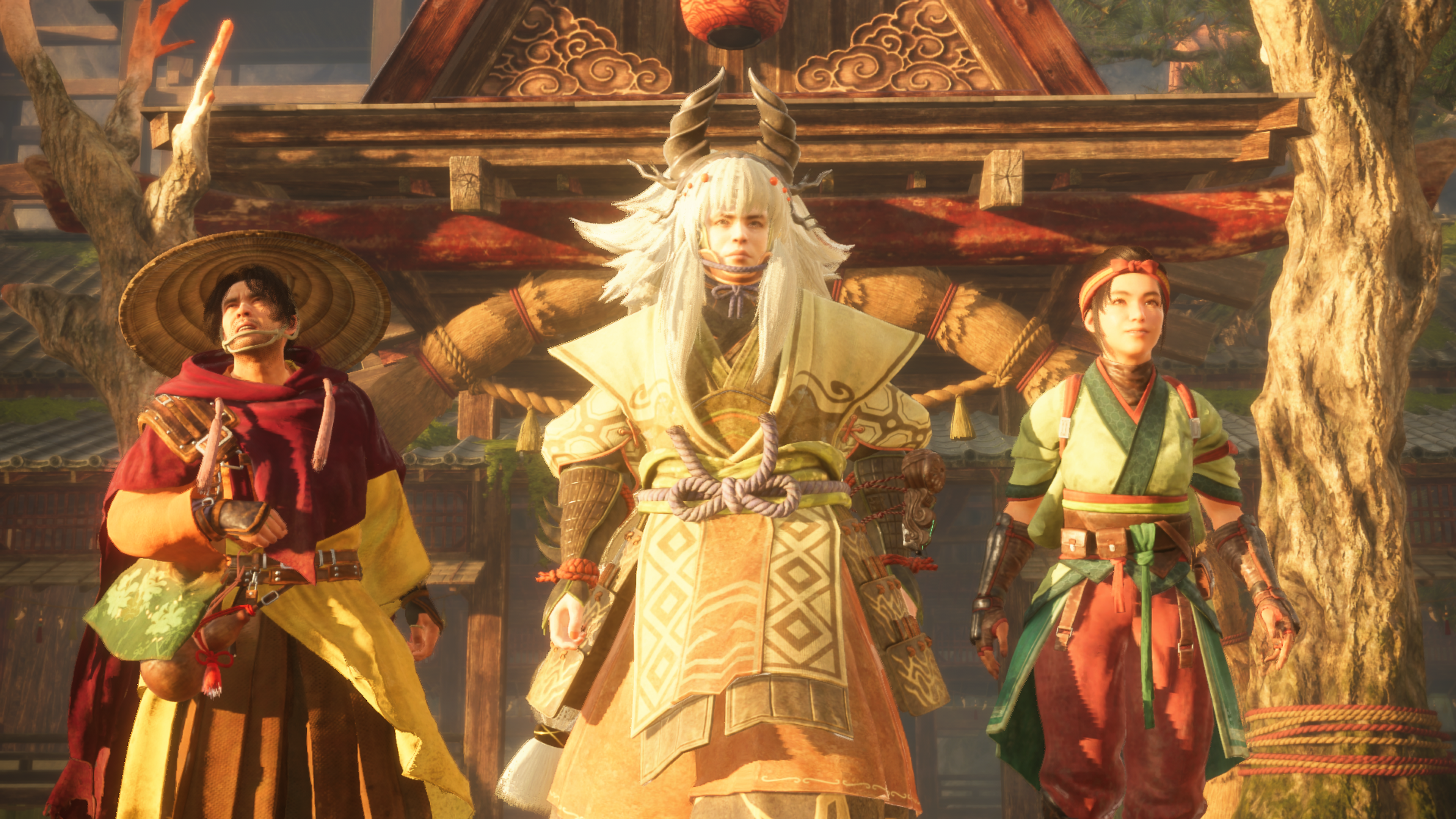
Framerate issues aside, I’ve been enthralled by what I have played of Wild Hearts so far. It is a bold, strange, and ambitious take on the action-hunting sub-genre featuring a variety of cool weapons to use, an interesting world to explore, intuitive multiplayer systems, and most importantly — challenging and awesome-looking monsters to hunt.
I can’t wait to see what the rest of Wild Hearts has in store because, so far, I feel this game could end up being one of the best Xbox games to add to your Xbox Series X and Xbox Series S library. Stay tuned for our full review, later this week.
Wild Hearts
Embark on a journey to the land of Azuma and protect humanity from the wild and terrifying Kemono. Hunt these imposing beasts alone or with your allies in three-player online co-op.
Buy at: Xbox

Alexander Cope is a gaming veteran of 30-plus years, primarily covering PC and Xbox games here on Windows Central. Gaming since the 8-bit era, Alexander's expertise revolves around gaming guides and news, with a particular focus on Japanese titles from the likes of Elden Ring to Final Fantasy. Alexander is always on deck to help our readers conquer the industry's most difficult games — when he can pry himself away from Monster Hunter that is!
